Robert B. Talisse in 3:AM Magazine:
 It seems everyone these days laments the polarized condition of democratic politics. It is widely agreed that fake news is a central cause of the degradation of our political culture. That there is accord on this point is noteworthy. Perhaps the consensus on fake news offers a swath of common ground amidst all of the divisiveness? Maybe our shared condemnation of fake news provides a basis for a broader plan for rehabilitating democracy?
It seems everyone these days laments the polarized condition of democratic politics. It is widely agreed that fake news is a central cause of the degradation of our political culture. That there is accord on this point is noteworthy. Perhaps the consensus on fake news offers a swath of common ground amidst all of the divisiveness? Maybe our shared condemnation of fake news provides a basis for a broader plan for rehabilitating democracy?
Such optimism might be premature. The unanimity over fake news possibly owes more to the semantics of the word fake than to a convergence of political values. Note that to call something fake is, at the very least, to mark it as suspect; it is to say that it is posing as something it’s not. So, yes, everyone denounces fake news. We oppose that which professes to be news, but isn’t. But we do not thereby agree about which institutions and reports are authentic. Unless there is a shared view of what fake news is, the consensus about its dangers is likely merely verbal, thus providing no basis for a rehabilitation plan.
There is as yet no canonical definition of fake news. Still, there might be reason to hope. Perhaps we share a conception of fake news that is inchoate, waiting for an explicit definition. Given this possibility, we should attempt to devise a definition.
More here.

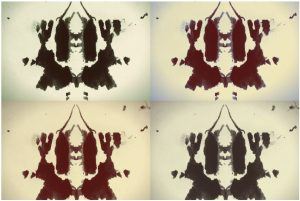 The Stanford Prison Experiment, one of the most famous and compelling psychological studies of all time, told us a tantalizingly simple story about human nature.
The Stanford Prison Experiment, one of the most famous and compelling psychological studies of all time, told us a tantalizingly simple story about human nature.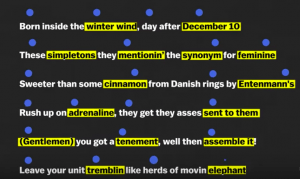 If high school English teachers can challenge skeptical students to cultivate an appreciation for Shakespeare and poetry with rap-based assignments, might the reverse also hold true?
If high school English teachers can challenge skeptical students to cultivate an appreciation for Shakespeare and poetry with rap-based assignments, might the reverse also hold true?
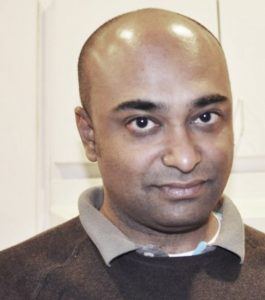 After nearly every economic downturn, voices appear suggesting that Marx was right to predict that the system would eventually destroy itself. Today, however, the problem is not a sudden crisis of capitalism but its normal workings, which in recent decades have revived pathologies that the developed world seemed to have left behind.
After nearly every economic downturn, voices appear suggesting that Marx was right to predict that the system would eventually destroy itself. Today, however, the problem is not a sudden crisis of capitalism but its normal workings, which in recent decades have revived pathologies that the developed world seemed to have left behind.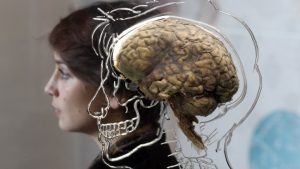
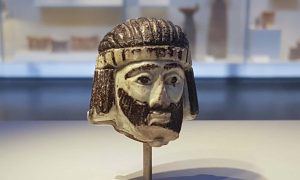 An enigmatic sculpture of a king’s head dating back nearly 3,000 years has left researchers guessing at whose face it depicts.
An enigmatic sculpture of a king’s head dating back nearly 3,000 years has left researchers guessing at whose face it depicts.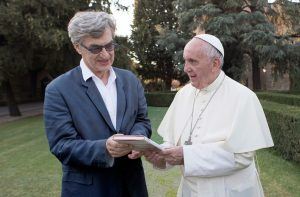 And then again this was, as filmmaking goes, not so different, at least in the impulse behind it, from some of my other films, because my documentaries don’t come out of a critical distance. Other filmmakers make films about something they want to expose or something they want to explore, or something that’s wrong with the world. My documentaries are all about things that I love and they show my affection, my desire to share this with as many people as possible, and that was definitely the case with Pope Francis. I loved this man and what he stood for, so anybody who expects a film that’s critical of the church or its policies is looking for the wrong movie. Already when I was a young film critic (I started as a film critic when I was a student and I earned money for my studies by writing criticism about movies) I refused to write about films I didn’t like. I thought it was not worth my time, or anybody’s time. I really only wrote about films I liked. And in a way that continued in my filmmaking career. I can’t even work with actors I don’t like. I don’t know what to do with them. I don’t know how to film them.
And then again this was, as filmmaking goes, not so different, at least in the impulse behind it, from some of my other films, because my documentaries don’t come out of a critical distance. Other filmmakers make films about something they want to expose or something they want to explore, or something that’s wrong with the world. My documentaries are all about things that I love and they show my affection, my desire to share this with as many people as possible, and that was definitely the case with Pope Francis. I loved this man and what he stood for, so anybody who expects a film that’s critical of the church or its policies is looking for the wrong movie. Already when I was a young film critic (I started as a film critic when I was a student and I earned money for my studies by writing criticism about movies) I refused to write about films I didn’t like. I thought it was not worth my time, or anybody’s time. I really only wrote about films I liked. And in a way that continued in my filmmaking career. I can’t even work with actors I don’t like. I don’t know what to do with them. I don’t know how to film them. Hatherley has a remarkable set of skills: he has the architectural, historical and political knowledge and the literary gifts to make him a worthy successor to the late, great and now rediscovered Ian Nairn – and occasionally some of the passion, too. Unfortunately, it all comes together here only in fits and starts. The main reason for that becomes clear at the end, in the acknowledgements, where he admits that the book is ‘essentially an anthology’. The majority of the chapters – portraits of individual cities – started as articles, published elsewhere, mostly in the Architects’ Journal.
Hatherley has a remarkable set of skills: he has the architectural, historical and political knowledge and the literary gifts to make him a worthy successor to the late, great and now rediscovered Ian Nairn – and occasionally some of the passion, too. Unfortunately, it all comes together here only in fits and starts. The main reason for that becomes clear at the end, in the acknowledgements, where he admits that the book is ‘essentially an anthology’. The majority of the chapters – portraits of individual cities – started as articles, published elsewhere, mostly in the Architects’ Journal.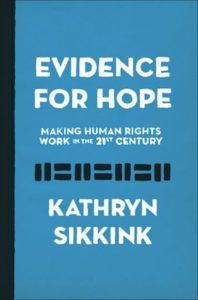 If human rights are to survive our fraught present and endure in the future, it is incumbent upon scholars to adopt a far more critical stance toward the study of human rights than they have so far been willing to do. Of course, academics have responded to the urgency of this crisis in a myriad of ways, and some had warned of the coming catastrophe from the politics of human rights. Despite the assault on human rights, some scholars cling to an uplifting and triumphalist story of the rise of human rights, one that leaves us both unable to understand the present and incapable of navigating the future. In this myth, humanity’s history is rendered as a slow but steady account of progress that will culminate in an Elysium of human rights. Far from helping us make sense of the challenges of our confusing present of human rights, these quixotic quests ransack the past in search of feel-good narratives of moral ascent and stirring stories of “hope” in the future — as if the misrepresentation of the past will magically bring about a brighter future in the name of human rights.
If human rights are to survive our fraught present and endure in the future, it is incumbent upon scholars to adopt a far more critical stance toward the study of human rights than they have so far been willing to do. Of course, academics have responded to the urgency of this crisis in a myriad of ways, and some had warned of the coming catastrophe from the politics of human rights. Despite the assault on human rights, some scholars cling to an uplifting and triumphalist story of the rise of human rights, one that leaves us both unable to understand the present and incapable of navigating the future. In this myth, humanity’s history is rendered as a slow but steady account of progress that will culminate in an Elysium of human rights. Far from helping us make sense of the challenges of our confusing present of human rights, these quixotic quests ransack the past in search of feel-good narratives of moral ascent and stirring stories of “hope” in the future — as if the misrepresentation of the past will magically bring about a brighter future in the name of human rights. Here is a novel that could so easily have been loud. It is set among large events: the fight for Indian independence and the second world war. It features characters from history who enter the lives of the novel’s fictional characters, often to dramatic effect – the poet
Here is a novel that could so easily have been loud. It is set among large events: the fight for Indian independence and the second world war. It features characters from history who enter the lives of the novel’s fictional characters, often to dramatic effect – the poet  Earlier this week,
Earlier this week, 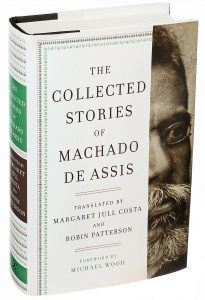 In a famous Hindu parable, three blind men encounter an elephant for the first time and try to describe it, each touching a different part. “An elephant is like a snake,” says one, grasping the trunk. “Nonsense; an elephant is a fan,” says another, who holds an ear. “A tree trunk,” insists a third, feeling his way around a leg.
In a famous Hindu parable, three blind men encounter an elephant for the first time and try to describe it, each touching a different part. “An elephant is like a snake,” says one, grasping the trunk. “Nonsense; an elephant is a fan,” says another, who holds an ear. “A tree trunk,” insists a third, feeling his way around a leg. Scheib and her colleagues
Scheib and her colleagues 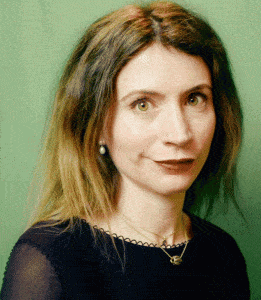 Claire Chambers (CC): In a way this book goes all the way back to the mid-1990s when I’d had a gap year in which I taught English to schoolchildren in Pakistan. I’d been motivated to go to Pakistan because of my experiences growing up in Leeds with many British-Asian friends. I first stayed briefly in a north-western city called Mardan, which was quite conservative. After leaving Mardan, my friend and I went to what seemed to us to be the big smoke of nearby Peshawar, the capital of what was then called the North-West Frontier Province, now Khyber Pakhtunkhwa. This was in 1993−94, not long after Osama bin Laden had left the city in 1990, having made it his home for eight years (Rashid
Claire Chambers (CC): In a way this book goes all the way back to the mid-1990s when I’d had a gap year in which I taught English to schoolchildren in Pakistan. I’d been motivated to go to Pakistan because of my experiences growing up in Leeds with many British-Asian friends. I first stayed briefly in a north-western city called Mardan, which was quite conservative. After leaving Mardan, my friend and I went to what seemed to us to be the big smoke of nearby Peshawar, the capital of what was then called the North-West Frontier Province, now Khyber Pakhtunkhwa. This was in 1993−94, not long after Osama bin Laden had left the city in 1990, having made it his home for eight years (Rashid 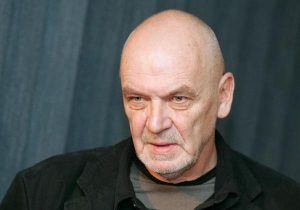 During the romantic 19th century, even at the beginning of the 20th, art legends were born in the attics and garrets, preferably Parisian. During the more practical decades of the late 20th century, artists relocated to much more prosaic places, such as the smoke-filled cellars of Liverpool (The Beatles) or the garages and student dormitories of the American West Coast, populated by computer magicians and IT wizards. The great legend of the Lithuanian theatre was born in a warehouse in Vilnius, more specifically, in the section of the Youth Theatre used both as a workshop and a warehouse in which stage decorations were stored. Nowadays, the building – a newly redecorated palace, originally built during the 15th and 17th centuries by the Radziwiłł family – is difficult to recognize and hosts the Museum of Lithuanian Theatre, Music and Cinema. In the 1970s, it was a dilapidated structure, despite the fancy name – Experimental Stage of the Youth Theatre – given to one of its decrepit halls. It was this stage, the most modest among the Lithuanian theatres of the time, that was chosen by Eimuntas Nekrošius for his debut as a theatre director in 1977. Then a student of GITIS, the Lunacharsky State Institute for Theatre Arts in Moscow (renamed the Russian Institute of Theatre Arts in 1991), Nekrošius directed his diploma performance A Taste of Honey (Medaus skonis) with the troupe of the Youth Theatre.
During the romantic 19th century, even at the beginning of the 20th, art legends were born in the attics and garrets, preferably Parisian. During the more practical decades of the late 20th century, artists relocated to much more prosaic places, such as the smoke-filled cellars of Liverpool (The Beatles) or the garages and student dormitories of the American West Coast, populated by computer magicians and IT wizards. The great legend of the Lithuanian theatre was born in a warehouse in Vilnius, more specifically, in the section of the Youth Theatre used both as a workshop and a warehouse in which stage decorations were stored. Nowadays, the building – a newly redecorated palace, originally built during the 15th and 17th centuries by the Radziwiłł family – is difficult to recognize and hosts the Museum of Lithuanian Theatre, Music and Cinema. In the 1970s, it was a dilapidated structure, despite the fancy name – Experimental Stage of the Youth Theatre – given to one of its decrepit halls. It was this stage, the most modest among the Lithuanian theatres of the time, that was chosen by Eimuntas Nekrošius for his debut as a theatre director in 1977. Then a student of GITIS, the Lunacharsky State Institute for Theatre Arts in Moscow (renamed the Russian Institute of Theatre Arts in 1991), Nekrošius directed his diploma performance A Taste of Honey (Medaus skonis) with the troupe of the Youth Theatre.